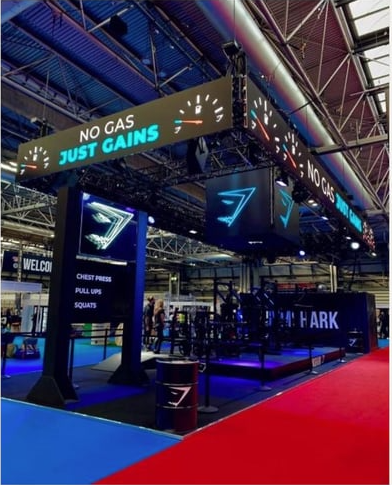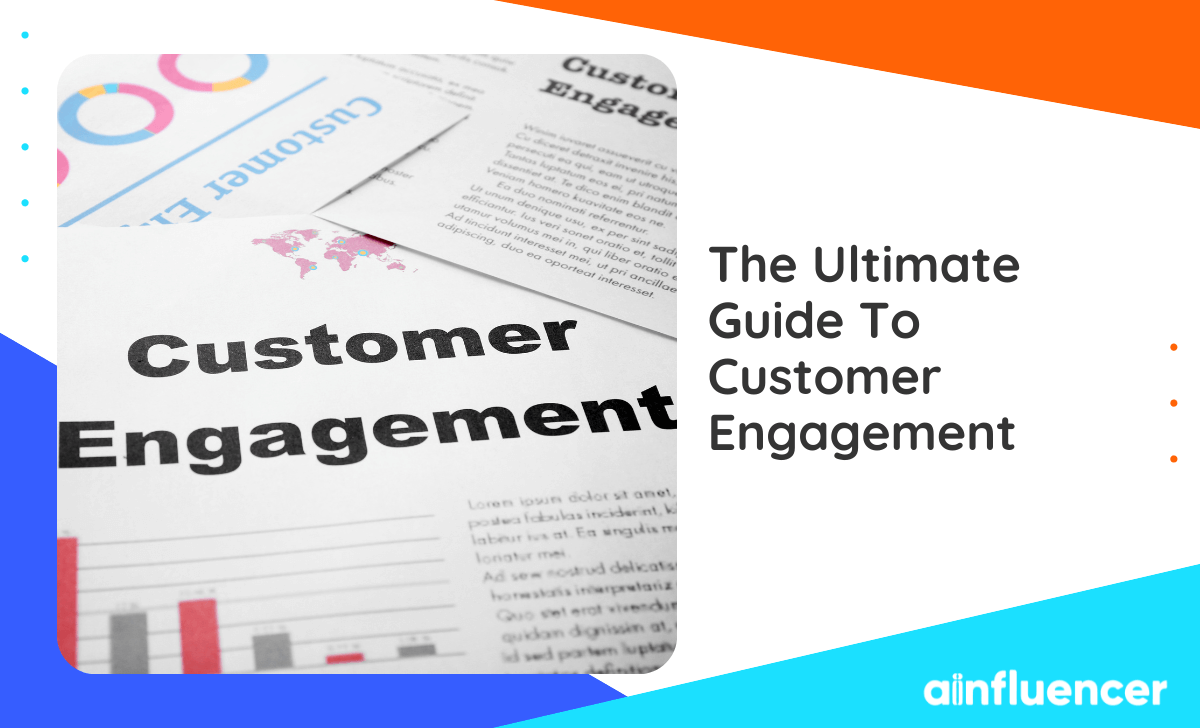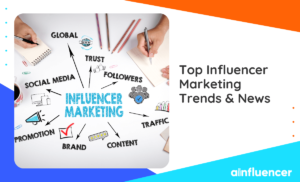In today’s business world, engaging with your customers is crucial to building long-term relationships and achieving success. Customer engagement goes beyond just making a sale; it involves creating meaningful interactions and experiences that keep customers coming back for more.
This guide will provide you with a comprehensive overview of customer engagement and equip you with the tools and strategies needed to engage with your customers effectively. From understanding the importance of customer engagement to implementing successful engagement strategies across various channels, this guide covers everything you need to know.
Whether you’re a small business owner or a marketing professional, this guide is designed to help you enhance your customer engagement efforts and create loyal customers that will stick with you for the long haul. So, let’s dive in and explore the world of customer engagement together!
What is customer engagement?
Customer engagement refers to the level of interaction and involvement that customers have with a brand, product, or service. It refers to the emotional connection that customers feel towards a brand or product, which can be cultivated through a variety of interactions and experiences.
Understanding the engaged customers definition means finding out those who are more likely to be loyal and to continue using a product or service over time. Engaged customers may also be more likely to recommend the product or service to others, which can help to drive growth and increase revenue.
There are many different ways that companies can foster customer engagement, including through social media interactions, personalized communications, customer feedback and surveys, loyalty programs, and more. Ultimately, the goal is to create a strong bond between the customer and the brand, which can lead to long-term success for both parties.
Benefits of building a customer engagement strategy
Developing a customer engagement strategy can bring a range of benefits to a business, including:
1- Improved customer loyalty
By engaging with customers on a regular basis and providing them with a positive experience, a business can build customer loyalty and increase the likelihood that customers will continue to use their products or services.
2- Increased customer retention
A strong customer engagement strategy can help reduce customer churn by encouraging customers to remain loyal to the business.
3- Better customer feedback
Engaging with customers can help a business gain valuable feedback about its products or services, which can then be used to improve the customer experience and inform future product development.
4- Enhanced customer satisfaction
By engaging with customers and providing them with a positive experience, a business can improve customer satisfaction and build a positive reputation.
5- Increased customer advocacy
Engaged customers are more likely to become brand advocates, sharing their positive experiences with others and helping to attract new customers to the business and increase its brand awareness.
6- Increased sales and revenue
A strong customer engagement strategy can lead to increased sales and revenue as loyal customers are more likely to purchase additional products or services from the business.
7- Competitive advantage
Businesses that prioritize customer engagement can gain a competitive advantage by providing a differentiated customer experience that sets them apart from their competitors.
Overall, building a customer engagement strategy is essential for businesses that want to build long-term relationships with their customers and create a sustainable competitive advantage.
What are the steps for customer engagement?
The steps for customer engagement can vary depending on the business, industry, and target audience. However, here are some general steps that can be followed for effective customer engagement:
1. Know your audience
To engage your customers effectively, you need to understand their needs, preferences, and pain points. Conduct market research and collect customer feedback to gain insights into your target audience.
2. Develop a customer engagement strategy
Based on the insights you’ve gathered, create a plan for how you will engage with your customers. This can include tactics such as social media marketing, email marketing, customer loyalty programs, and more.
3. Create relevant content
Develop content that is relevant, useful, and engaging to your target audience. This can include blog posts, videos, social media posts, and other forms of content that provide value to your customers.
4. Choose the right channels
Determine which channels your customers prefer to engage with your brand, whether it’s through social media, email, or other channels.
5. Encourage customer feedback
Encourage your customers to provide feedback on your products, services, and overall customer experience. This can help you improve your offerings and build a stronger relationship with your customers.
6. Personalize the experience
Use customer data to personalize the customer experience, such as offering personalized product recommendations, sending targeted offers, and addressing customers by name.
7. Measure and analyze results
Track your customer engagement efforts and measure the results to determine what is working and what needs improvement. Use this information to adjust your strategy and continue to optimize your customer engagement efforts.
Types of customer engagement
Customer engagement is a crucial aspect of any successful business, as it is a measure of the customer’s level of involvement and interaction with your brand. Tracking and analyzing customer engagement allows you to gain insights into their behavior, preferences, and expectations, which can help you develop effective strategies to improve your products, services, and overall customer experience.
However, to do so, you must first define what you want to measure. There are various types of customer engagement that you can monitor, which can be categorized based on the different stages of the customer journey. By defining these types of engagement, you can gain a better understanding of how your customers are interacting with your brand and create strategies to enhance their experience.
Here are the different types:
1. Awareness stage engagement
At this stage, customers are not yet aware of your brand or product. Therefore, your goal is to create brand awareness and generate interest in your product or service. Social media engagement is an effective way to reach potential customers and start building a relationship with them. You can use social media platforms like Facebook, Twitter, LinkedIn, or Instagram to create engaging content and start conversations with your target audience. Another way to engage potential customers at this stage is through content marketing, such as blog posts, videos, and infographics, that provide valuable information and answer their questions.
2. Consideration stage engagement
At this stage, customers are actively considering your product or service, and they are looking for more information to make a decision. Personalized emails and retargeting ads can be effective tools to engage customers and provide them with the information they need.
You can use data from previous interactions to personalize your email marketing campaigns and suggest products or services that match their interests. You can also use retargeting ads to show customers relevant products or services based on their previous searches or website visits. Customer reviews can also be a powerful tool to engage potential customers at this stage, as they provide social proof and build trust.
3. Purchase stage engagement
At this stage, customers are ready to make a purchase, and your goal is to make the process as smooth as possible. You can do client engagement at this stage by providing a user-friendly checkout process, offering personalized recommendations, and using upselling and cross-selling techniques to increase the value of their purchase. By providing a positive shopping experience, you can increase the chances of customers returning for future purchases.
4. Post-purchase stage engagement
At this stage, customers have made a purchase, and your goal is to ensure they are satisfied with their experience and encourage them to make future purchases. You can engage consumers at this stage by sending order confirmation emails, shipping updates, and follow-up surveys or feedback requests. By providing excellent customer service and addressing any issues or concerns, you can build trust and loyalty with customers.
5. Advocacy stage engagement
At this stage, customers are satisfied with your brand or product and may recommend it to others. You can engage customers at this stage by offering referral programs, encouraging user-generated content, and sharing social media shoutouts. By rewarding loyal customers and building a community around your brand, you can increase their advocacy and encourage them to share their positive experiences with others. This, in turn, can help attract new customers and build and increase brand awareness.
Best customer engagement tools
There are many customer engagement tools available, and the best ones for you will depend on your specific needs and goals. Here are some popular customer engagement tools that you might find helpful:
- Live Chat: Live chat tools allow customers to connect with businesses in real time. It’s a great way to provide quick and efficient customer support.
- Email Marketing: Email marketing is a great way to engage with customers by sending them personalized messages, special offers, and promotional content.
- Social Media Management: Social media management tools help businesses to create and manage their social media presence across different platforms. It’s a great way to connect with customers and build brand awareness. Social media networks such as Instagram, Facebook, and YouTube are among the best customer engagement platforms.
- Customer Feedback Tools: Customer feedback tools allow businesses to collect feedback from their customers and gain valuable insights into their needs and preferences.
- CRM Software: Customer relationship management (CRM) software is an engagement customer service that can help businesses manage customer relationships by organizing and analyzing customer data.
- Marketing Automation: Marketing automation tools help businesses automate repetitive marketing tasks, such as email campaigns, lead generation, and social media management.
- Web Analytics: Web analytics tools help businesses track website traffic, monitor customer behavior, and measure the success of marketing campaigns.
- Mobile Marketing: Mobile marketing tools help businesses reach customers on their mobile devices through SMS marketing, push notifications, and in-app advertising.
These are just a few of the many customer engagement tools available. You can choose the tool that best fits your needs and goals.
Best customer engagement platforms
There are many customer engagement platforms available in the market, and the best one for your business will depend on different factors, such as your needs and budget.
However, here are some popular options:
- HubSpot: HubSpot is a powerful all-in-one customer engagement platform that includes CRM, marketing, sales, and customer service tools. It offers features like email marketing, social media management, live chat, and customer feedback.
- Intercom: Intercom is a customer messaging platform that allows businesses to engage with customers through targeted messages, chatbots, and personalized content. It offers features like in-app messaging, email campaigns, and customer segmentation.
- Zendesk: Zendesk is a customer service software that allows businesses to manage customer interactions across multiple channels. It offers features like ticket management, a knowledge base, live chat, and customer feedback.
- Salesforce: Salesforce is a cloud-based CRM platform that offers a suite of tools for sales, marketing, and customer service. It offers features like lead and opportunity management, email marketing, social media management, and customer support.
- Freshworks: Freshworks is a customer engagement platform that offers a range of tools for sales, marketing, and customer support. It offers features like CRM, live chat, email marketing, and helpdesk software.
Evaluate the platforms mentioned above, and don’t forget to consider factors like cost, ease of use, and scalability before making a decision.
Best customer engagement strategies
There are several customer engagement strategies that businesses can use to build strong relationships with their customers. Here are some of the most effective strategies:
1. Personalization
Personalization involves tailoring messages, offers, and interactions to meet the specific needs and interests of individual customers. This can be done using data such as purchase history, browsing behavior, and demographic information. By personalizing the customer experience, you can create a more meaningful connection with customers and increase the likelihood of repeat purchases and referrals.
2. Omnichannel communication
Omnichannel communication involves offering customers multiple ways to interact with your business, such as email, social media, chatbots, phone, and in-person interactions. You can provide customers with the flexibility to communicate on their preferred channels and improve customer satisfaction and loyalty.
3. Influencer marketing
Influencer marketing is also among the top customer engagement strategies. It is effective because consumers today trust the recommendations of people they follow on social media more than traditional advertising. By partnering with influencers who are a good fit for your brand, you can reach a highly engaged audience and build credibility through social proof.
However, it is important to approach influencers strategically and work with influencers who are a good fit for the brand and its target audience. Influencer marketplaces, such as Ainfluencer, allow you to search for your desired influencers through filters, including hashtags, category, gender, location, etc. Ainfluencer also allows you to invite, connect, and chat with influencers on the platform.
4. Feedback gathering
Gathering feedback from customers is essential for understanding their needs and preferences. This can be done through surveys, reviews, and social media. Listening to customers and incorporating their feedback into business decisions can help you improve customer satisfaction and retention.
4. Loyalty programs
Loyalty programs reward customers for their continued business with discounts, freebies, and exclusive offers. These programs can increase customer retention and promote brand advocacy.
5. Community building
Building a sense of community around the brand can help customers feel more connected to the business and each other. This can be done through social media groups, forums, and events.
6. Personalized post-purchase follow-ups
You can also thank customers for their business and offer assistance by following up with them after their purchase. It’s better to personalize these follow-up messages based on their purchase history and preferences.
7. Continuous education
One of the other top customer engagement strategies is providing customers with educational content such as blog posts, videos, and tutorials. It can help you build trust and credibility while providing value to customers. By continuously educating customers, you can position yourself as an industry expert and increase customer loyalty.
In summary, these customer engagement strategies can help you build strong customer relationships, engage consumers, improve satisfaction and loyalty, and ultimately drive business growth.
8. Unique brand voice
Building a strong brand voice can also be an effective customer engagement strategy. A brand voice is the personality and tone of communication that a company uses to interact with its audience. It helps to create a consistent and recognizable image of your brand, making it easier for customers to identify and engage with.
Customer engagement success metrics
As it was mentioned before, customer engagement is an essential aspect of business success and can help build strong relationships with customers and encourages loyalty. There are several metrics that you, as a brand, can use to measure the success of your customer engagement efforts:
1. Customer satisfaction
Measuring customer satisfaction is crucial for businesses to understand how well they are meeting the needs and expectations of their customers. Customer satisfaction surveys, feedback forms, and customer support interactions can all provide valuable insights into the level of satisfaction customers have with a brand. A high level of customer satisfaction indicates that customers are engaged with the brand and are more likely to remain loyal and make repeat purchases.
2. Net promoter score (NPS)
NPS is a widely used metric to measure customer loyalty and the likelihood of customers recommending a brand to others. It is calculated by subtracting the percentage of detractors (customers who would not recommend a brand) from the percentage of promoters (customers who would recommend a brand). A high NPS score indicates that customers are highly engaged with the brand and are likely to promote it to others.
3. Customer retention rate
Customer retention rate is the percentage of customers who continue to do business with a brand over a given period of time. It is a valuable metric for measuring customer engagement, as a high retention rate indicates that customers are satisfied with the brand and are more likely to purchase again.
4. Engagement rate
The engagement rate measures the level of interaction customers have with a brand across various channels, including social media, email marketing campaigns, and website visits. It provides insights into how customers are engaging with the brand and can help businesses identify areas for improvement.
5. Average order value (AOV)
AOV measures the average amount customers spend per transaction. Increasing AOV can be a sign of strong customer engagement, as it indicates that customers are making more purchases and are more likely to continue doing so in the future.
6. Customer lifetime value (CLV)
CLV is the total value a customer brings to a business over the course of their relationship. It is an important metric for measuring client engagement, as a high CLV indicates that customers are making repeat purchases.
In summary, each of these metrics provides unique insights into the level of customer engagement and can help businesses understand how well they are meeting the needs of their customers. By monitoring these metrics and making data-driven decisions to improve them, businesses can build stronger relationships with their customers and increase customer loyalty over time.
Customer engagement examples
The given examples demonstrate how various companies have successfully engaged with their customers.
1. Coca-Cola

In 2014, Coca-Cola introduced the #ShareACoke campaign, which replaced its logo on 20-ounce bottles with 250 of the most common names in the US. This marketing campaign was a hit because it actively involved customers in the process and resulted in the brand becoming a topic of conversation among people.
2. Starbucks
As one of the other customer engagement examples, Starbucks launched the Starbucks Reserve Roastery and Tasting Room, allowing customers to interact with coffee experts, witness coffee brewing, and sample rare coffee blends. This move enabled Starbucks to connect with its customers in a unique and interactive way.
3. Gymshark

Another example of successful customer engagement is Gymshark, which has achieved remarkable growth in its customer base by leveraging social media, guerrilla marketing, and influencer partnerships. The brand’s strength lies in its ability to connect with its customers through customized and engaging content that resonates with them and encourages them to share and interact with the brand.
An excellent illustration of this approach is Gymshark’s response to the gas shortage crisis in the UK, where they set up an interactive pumping station. This initiative allowed the brand to engage with both new and existing customers in a genuine and personalized way, facilitating a stronger relationship with them. This customer engagement campaign not only raised brand awareness but also reinforced the authenticity of the brand, which is crucial for building long-term customer loyalty.
These examples demonstrate that customer engagement can take many forms, but the key is to create a genuine and interactive connection with customers that extends beyond the point of sale.
Conclusion
In conclusion, the world of customer engagement is constantly evolving, and it is essential to stay up-to-date with the latest trends and strategies. Through this ultimate guide, you have learned about various tools and tactics that can help you effectively engage with your customers and create long-lasting relationships. Whether through personalization, social media, or customer feedback, remember that the key to successful customer engagement is to prioritize the needs and preferences of your customers.
By implementing these strategies and continuously adapting to changes in the market, you can build a loyal customer base and drive business growth. So, go ahead and put these tips into practice and take your customer engagement efforts to the next level!
FAQs:
There are four main types of customer engagement that businesses should consider when developing their marketing and customer service strategies.
The first type is emotional engagement, which involves creating a positive emotional connection between the customer and the brand, such as through brand personality, messaging, and customer service.
The second type is contextual engagement, which takes into account the customer’s specific needs, preferences, and behaviors to offer tailored experiences and solutions.
The third type is convenient engagement, which focuses on minimizing the effort required for customers to interact with the brand, such as through self-service options and 24/7 availability.
Finally, social engagement involves building relationships with customers through social media and other online channels, providing opportunities for them to connect with each other and share experiences. By considering these four types of engagement, businesses can improve customer satisfaction, loyalty, and advocacy.
Customer engagement is vital for building strong relationships between businesses and their customers. Engaged customers are more likely to feel connected to the brand, develop a sense of loyalty, and continue to do business with the company. They are also more likely to recommend the brand to others and share positive experiences on social media and review sites.
The benefits of customer engagement include increased revenue, higher customer satisfaction, and improved brand reputation. By fostering positive interactions with customers, businesses can create a strong emotional connection and increase customer trust and loyalty.
Ultimately, customer engagement is a critical component of a successful business strategy, helping companies to build relationships with customers, increase revenue, and improve brand reputation.









